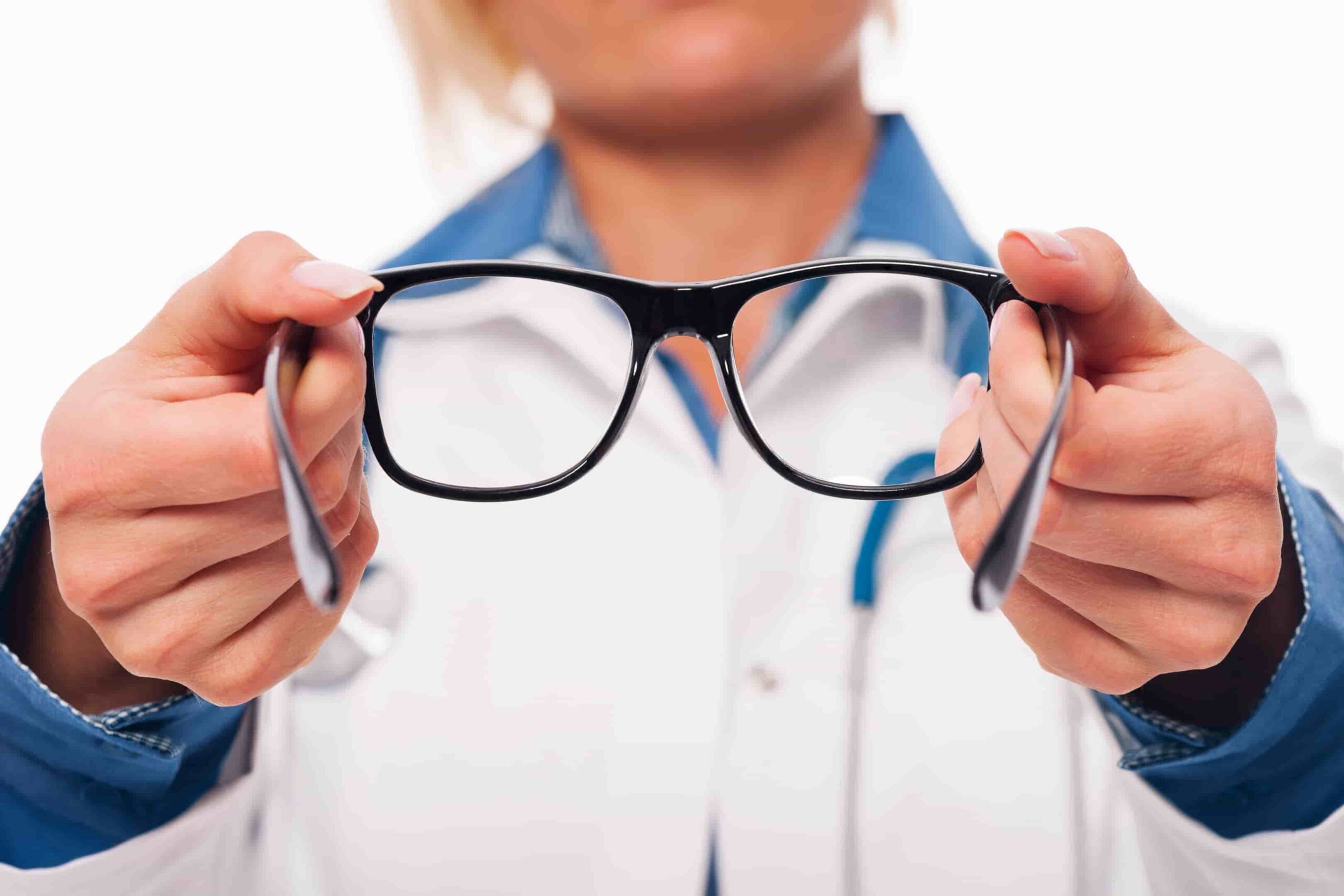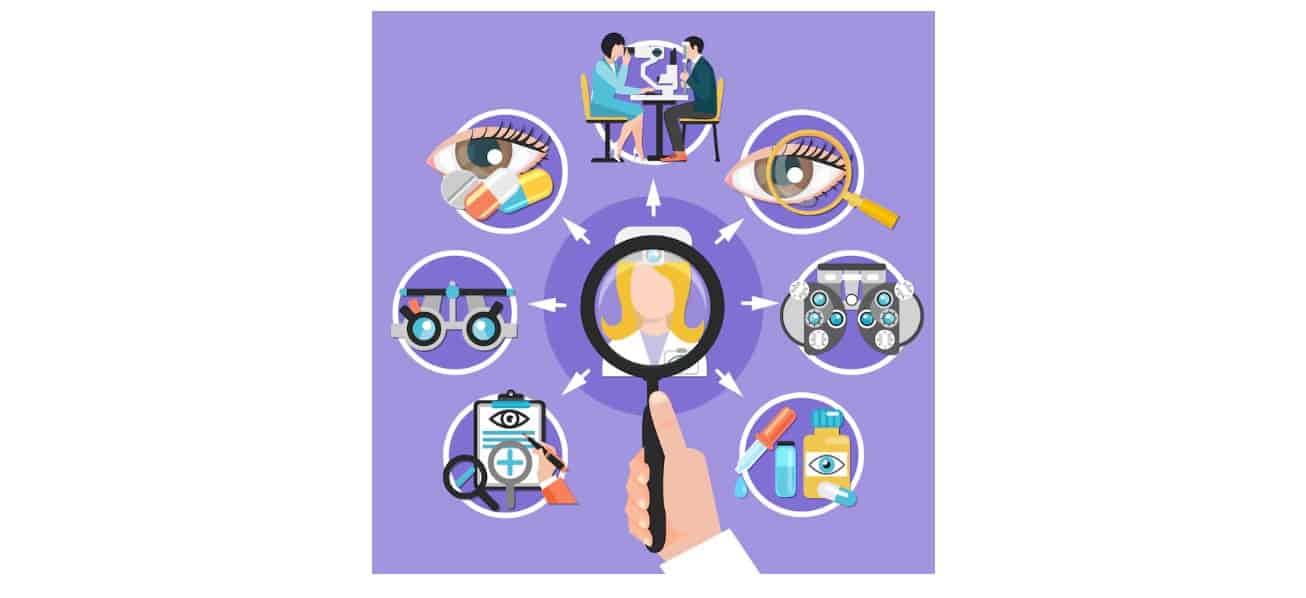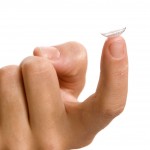What is Eye Addition?

It is not uncommon to have an eye doctor hand you a prescription without explanation. 1 in 3 doctors gives you your prescription and expects you to take it straight to an optometrist for designing and fixing.
But you can agree that you also need to understand what is written on that piece of document. Standard eyeglass prescriptions include a lot of symbols and numbers.
Most of them look like (-) 3.00 or (+2.50). Some other eyeglass prescriptions are seen with fractions of numbers. But what does this number mean, and what is the plus and minus sign?
Today, this article will discuss the meaning of eyeglass prescription, the meaning of the numbers, and what lens power means, as well as explain the minus & plus sign in every eyeglass prescription. Stay tuned to the end if you are ready to learn all these and more.
Let’s get you started.
If you check for online resources on what eye addition is, you’d be bombarded with articles on eyeglasses prescription and things of that sort. While this information is 100% valid and relevant, it does not answer the question, ‘what eye addition is?’
Eye addition is a person’s additional correction to reach optimal eye health for reading.
It is commonly used in varifocal, reading, or bifocal glasses. Addition stands for lens power over the distance prescription.
Other definitions you might want to know about include the following:
- ADD is short for eye addition; as mentioned earlier, it is the extra lens power needed to reach optimal visual acuity for reading. The number is included during a prescription for reading glasses or at the bottom segments of bifocal or progressive lenses. Not that ADD is not limited to a plus sign. It can also come as a minus sign.
- Axis tells the location of astigmatism in the eye – more on this below. It indicates the location of the eye that needs astigmatism correction and the areas that don’t. Axis is represented as a number between 1 and 180.
- BD, BI, BO, and BU stand for base down, base in, base out, and base up, respectively. These abbreviations are to correct double vision. Written directly to the optician, it tells the manufacturer the best positioning for the prism on the eyeglass.
- CYL is another astigmatism corrective concept, just like the axis. Otherwise known as a cylinder, it tells the amount of astigmatism in your eye. The axis and cylinder work together to help correct astigmatism.
- DV is an abbreviation for distance vision. DV is used to describe if a person is short-sighted or long-sighted.
- NV stands for near vision. Note that NV is not the opposite of distance vision; it is the lens power needed to reach optimal eye status for reading.
- OS is oculus sinister, or your left eye.
- OD means oculus dexter or your right eye.
- OU stands for oculus uterque or both eyes.
How do I read an eye prescription?

An eyeglasses prescription, as mentioned earlier, contains many elements. It determines how much correction you’ll need on your lens (eyeglasses or contact lens) to help correct any vision problem.
Therefore, the rest of this article will be spilt into the types of vision problems that exist (at least the major ones), and then it will go on to the types of prescription for each eye defect.
Vision problems that need an eyeglass prescription.
Farsightedness
Also referred to as hyperopia or long-sightedness, it occurs when you can see objects far from you very easily, but you develop a blurred vision for near objects.
Hyperopia occurs when the shape of the cornea is not as curved as it should be (it could sometimes be perfectly round), which makes the distance to the retina from the cornea not long enough.
This event causes the light to fall at the back of the retina and not on it directly. That way, close images would seem unclear and fuzzy.
Nearsightedness
Nearsightedness is the opposite of far-sightedness and can also be called shortsightedness or myopia. It is a situation where the person can only see close objects, and then a far image becomes blurry.
Here the cornea is long instead of small and rounded (as with farsighted people). The elongation of the cornea then causes the distance between the cornea and the retina to be too much.
Hence, the light falls in front of the eye rather than on top of it. Note that overly curved corneas can sometimes cause shortsightedness – as long as the light drops in front of the cornea.
Astigmatism
Astigmatism happens when the outline of the cornea is distorted. The distortion then causes blurred vision for far and near objects.
The light refracts onto your retina in different ways (due to the irregularity) and provides distorted and blurred vision.
Some other symptoms of astigmatism include straining of the eye, difficulty seeing at night, squinting, headaches or migraines, and eye discomfort.
Prescription glasses for each vision problem

The following are the glasses and contact lens prescriptions for the eye defects mentioned earlier;
Nearsighted prescription
If you want to correct nearsightedness, your lens needs to bend the glare so that it lands on the retina, hence seeing far objects better.
Your prescription would come with a minus sign (-). Therefore, if you are short-sighted, your prescription would be -5.00 or -3.20.
Note that the higher the number is, the more short-sighted you are. In the same way, the test is conducted for each eye, producing a result for the right and left eye.
Farsighted prescription
While correcting farsightedness, the examiner will include the addition of the lens, which would be indicated with a plus sign (+). A higher number shows that you are more farsighted. Some example prescription for farsighted prescriptions include +4.00, +2.00, or +1.50
What about contact lens prescription?
If you are not going for eyeglasses, the other option is contact lenses. You’ll need a stronger prescription since contact lenses sit directly on your cornea.
They must match your eye shape and base curve to provide maximum treatment.
Your prescription should be on your optician’s e-book at a check in your contact lenses box or in the blister pack which contains your contacts.
In writing prescriptions generally, the following are provided:
- Base curve diameter power
- Additional cylinder
- Axis number for astigmatism
- Addition figures
Tell me the difference between glasses prescription.

The difference between every prescription lies in the base curves, diameter, and addition.
- Base curves (BC): Base curves determine the fit needed to align the lens with the eye; these may usually be written in millimetres, flat median, or steep.
- Diameter (DI): The diameter of contact lenses in millimetres determines how wide the cornea should be for a particular eye type.
- Addition: The number demonstrates a person’s long and shortsightedness regarding the correct amount of correction needed for their eyes. If you have long-sightedness or hyperopia, the figure starts at + (plus) and – (minus) signs when you have shortsightedness.
Conclusion
Note that your eyeglass prescription is not limited to far-sightedness, shortsightedness and astigmatism. Other things your lens might consist of include a progressive addition lens for those needing adjustments in the distance and close-up vision. Some lenses could also be photochromic for photophobic people. When you are photophobic, your eyes would be especially sensitive to light. The photochromic glasses darken or lighten the lighting conditions around you. In the same way, anti-glare and anti-reflective coatings can be additional characteristics you could come across.






